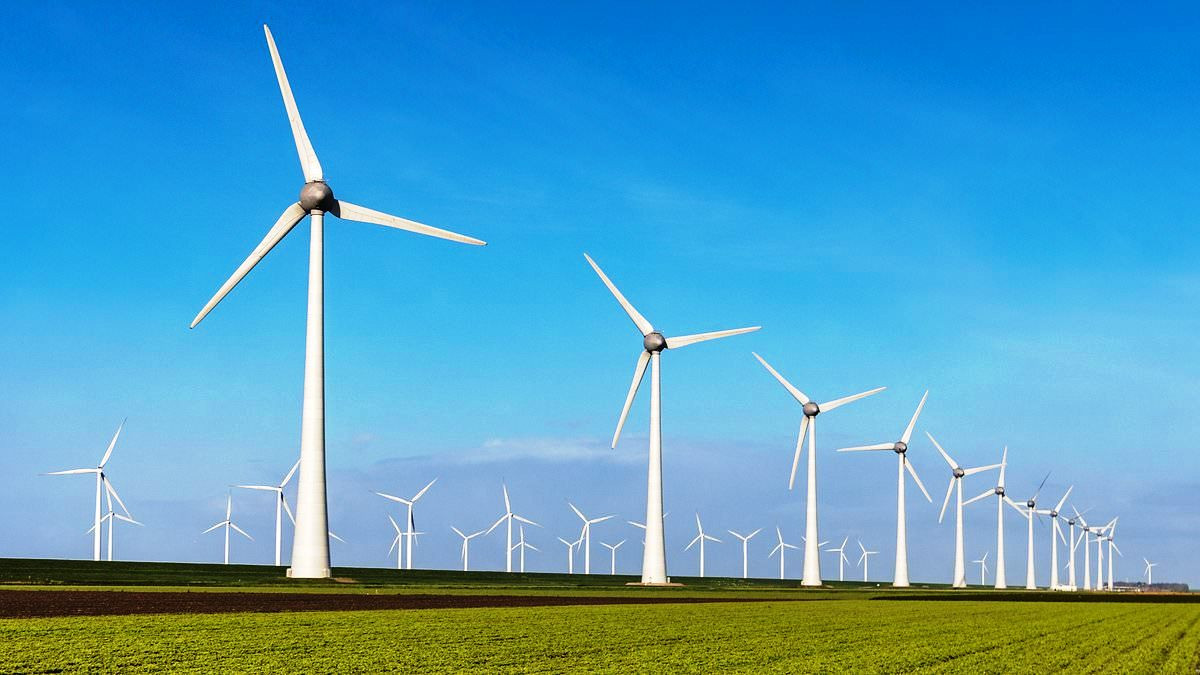Netherlands RATIONS Electricity as Country Struggles to Cope With Turning Away From Gas as Part of Green Policies – as Expert Warns Britain is Also ‘in Trouble’
The Netherlands is rationing electricity as its overloaded power grid buckles under the pressure of rapid electrification and ambitious climate goals.
More than 11,900 businesses are stuck in a queue for access to the network, alongside public buildings including hospitals, schools and fire stations.
Thousands of new homes are also waiting to be connected, with some areas warned they may have to wait until the 2030s.
The crisis has emerged as the country scrambles to cut carbon emissions.
And now experts are warning that Britain, as well as Belgium and Germany, are all ‘in trouble.’
The countries should ‘definitely’ see what is happening in the Netherlands as a warning, says Zsuzsanna Pató, from Brussels-based energy think tank RAP.
After shutting down production at the massive Groningen gas field last year, the Dutch government has pushed a fast transition to electric heating, solar power and battery storage.
But the national grid has failed to keep pace, creating widespread bottlenecks and driving up costs.
Officials estimate €200 billion will be needed by 2040 to expand grid capacity. Electricity prices are already among the highest in Western Europe, and Dutch households face yearly tariff increases of up to 4.7 percent for at least the next decade.
To ease demand, operators are offering cheaper contracts for off-peak usage and telling major industries they may need to shut off entirely for several hours a day.
A national ad campaign is urging the public to avoid charging e-bikes and electric cars between 4pm and 9pm, when the grid is under the most strain.
The Netherlands has been one of Europe’s most aggressive adopters of green policies, aiming to cut emissions in half by 2030.
The shortage has alarmed local leaders, who say businesses are already pulling out of investment plans.
In Brainport, the high-tech southern region that is home to semiconductor giant ASML, mayor Jeroen Dijsselbloem says no new grid capacity will arrive before 2027.
He said: ‘Everything is going electric and electricity infrastructure needs to grow massively. We need more than 100 medium substations and 4,000 small ones.’
Although the Netherlands is one of the worst-hit, Spain has already experienced major power blackouts earlier this year, after its own grid came under pressure during peak demand.
Thousands of people and many organisations were brought to a standstill shortly after midday on April 28 when the country was disconnected from the European electricity grid for hours.
Britain itself faced electricity rationing in the 1970s during the coal miners’ strikes, when lights were turned off and businesses forced to work a three-day week.
For more than two months, many homes were forced to burn candles and look for alternative means of electricity.
In the Netherlands, some companies are now trying to solve the problem themselves.
American medical firm Thermo Fisher, which has a large base near Eindhoven, is investing in battery storage and rooftop solar to avoid delays.
Others are working with local authorities to build shared ‘energy hubs’ that allow businesses to pool grid access.
But grid operators say they are also facing a shortage of 28,000 trained technicians, slowing down efforts to install the infrastructure needed.
For more than two months in the 70s, people were forced to work a three day week when the lights were turned off
For more than two months in the 70s, people were forced to work a three day week when the lights were turned off
For now, officials are looking at ways to squeeze more out of the grid without risking blackouts.
Despite the alarming report, officials close to the situation have tried to downplay its effect with one saying: ‘It’s nowhere near as bad anywhere else.’
Source: https://www.dailymail.co.uk/sc....iencetech/article-14















